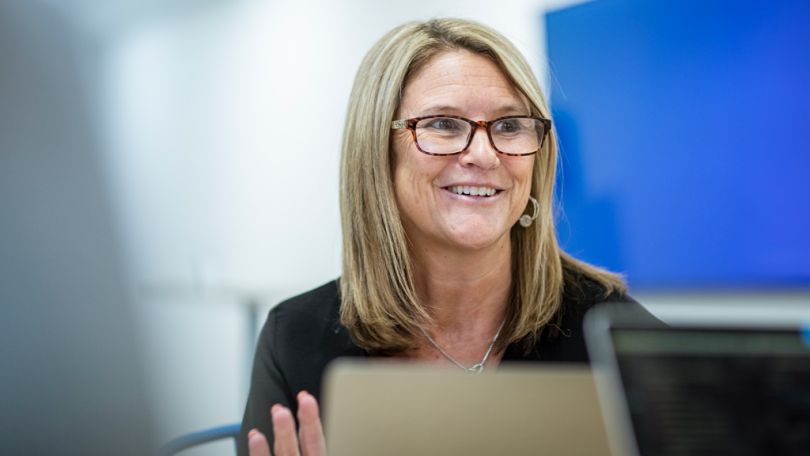When Clearcover unveiled its Clear Claims™ platform in the fall of 2020, the project leaders, Matt Christopher, the VP of claims, and Don Wilson, the product lead for claims, stressed patience.
After all, this was brand new tech for the auto insurtech company and the industry at large. Using AI and machine learning, the Clear Claims platform was supposed to assess the eligibility of a driver’s auto insurance claim and issue payment within 30 minutes or less after filing — a stark difference in an industry that can sometimes take 30-plus days to process and pay a claim. But Christopher and Wilson weren’t sure how long it would take to hit their benchmark. Would it be weeks? Months?
“On our third or fourth claim, we hit the 30-minute mark,” Wilson said. “Within a month we hit 15 minutes. Then less than 90 days later, we cut that time in half to 7 minutes. That’s when we realized, ‘Wow, this is really special.’”
Clear Claims was evolving at a pace that neither Christopher nor Wilson could’ve imagined. One customer was able to get their payment processed within 30 minutes of when their accident occured. Another got their payment processed seven minutes after filing their claim.
Developments like this were fun and exciting at Clearcover — but they’re no longer surprising. Since 2016, the company has shaken up the traditionally slow-to-evolve auto insurance industry with speed and technology, and Clear Claims simply fits that mold.
“For certain claims, we think we could beat our current record of seven minutes,” Christopher said. “We want to get it down to seven seconds.”
What is it like to work at a fast-moving, fast-growing company, and how will Clearcover’s tech continue to evolve and differentiate itself in the auto insurance space? Built In Chicago sat down with three team members to find out.

How does the tech at Clearcover differentiate itself from other companies in the auto insurance industry?
Matt Christopher, VP of Claims: People want things at their fingertips right away. But they’re not exactly used to that with insurance. It’s an outdated industry with legacy systems and processes. Clearcover wants to be different. One of our competitive advantages is that we’re nimble and we move fast. For example, we were on the forefront of using a virtual process where customers could submit photos of their accidents, which would generate an estimate.
Pre-pandemic, a lot of insurance companies were still sending out individuals to physically inspect a vehicle after an accident, which usually adds five to seven days to the process. But Covid-19 has forced a shift in the industry to where most of our competition has adapted to the virtual process. That’s partly what led to the innovation of Clear Claims. In a virtual playing field, we’re faster. Nobody is processing payment of eligible claims within 30 minutes.
Alyssa Thao, VP of Insurance Product: Ultimately, we’re trying to use technology to make a fantastic customer experience, but also keep costs low for us and our customers. We’re looking to create a digital-first experience for our customers. We have a high mobile app rating with an average of 4.7 stars.
Don Wilson, Product Lead for Claims: We’re innovative. Putting together estimates is one of the more time consuming pieces of our industry. But with AI, we’re developing a process where we can assess the damage of a vehicle and estimate claims within seconds.
One of our long-term goals is to fully automate the estimation part of the claims process. Identifying the right claims that we can process in an expedited fashion means identifying which coverages are applicable. Insurance is all about reducing risk. But it means that we have to apply specific coverages to specific accidents. Surveying an accident and identifying what coverages are applicable is one of the biggest jobs that our adjusters have to do. We’ve done this with Clear Claims and are looking to expand our coverage validation and to address more questions before the adjusters even touch the claim. We’re also looking to develop a way to easily identify fraudulent claims.

How is it possible to pay an eligible claim in seven minutes, let alone seconds?
Wilson: Within our mobile app, there’s an opportunity for a customer to take photos of the scene of an accident and submit a claim right away. Once the customer submits the claim, we look at the pictures, the damage, the type of incident that occurred and the customer’s track record with us. Then, our ClearAI takes that information and scores it, giving us a way to say, “This is one we can process right away.” That’s how we can get to seven minutes.
Christopher: For certain types of claims, we think we can get it down to seven seconds. That’s our long-term goal. If it’s minor damage like a fender-bender — an accident that does not cost $50,000, but around $2,500 to repair the vehicle — we can take people out of the equation and have AI take care of the estimate.
DIVERSITY MATTERS
What are some aspects about Clearcover’s culture that stand out to you?
Wilson: We’re a tech-first company, which means we are remote-first. That’s not common in the insurance industry. It allows us to attract top talent across the country.
Thao: Not only do we celebrate wins, but we also celebrate failures. In one of my first meetings, our CEO was talking about a failure that he made, and how it was a great learning experience for him. I was impressed by that. It shows how Clearcover is a place where it’s OK to take a risk and fail fast, as long as you learn from it.
Christopher: We have great companywide transparency. Clearcover has monthly all-hands meetings where senior leaders share the company results — both good results and areas we could improve upon. It really shows how transparent senior leadership is about getting everybody informed so that we can all play a role in the performance of the company.
THEY’RE GROWING

What does collaboration look like on the claims team?
Christopher: A lot of teamwork is required every time we launch into a new state. It’s a collaborative effort between insurance, product, claims, customer experience and technology. Every state has different regulations and laws when it comes to insurance. For the claims team, there’s so many nuances we have to learn, and it’s vital that we’re ready to help our customers once we enter a new state.
Thao: Within the insurance team, I have a group that specifically does all of the contract writing. But Matt’s team delivers on that contract to our customers, so it’s super important that they are in lockstep over how they’re going to write our policy language. That collaboration and close relationship is critical to our work.






